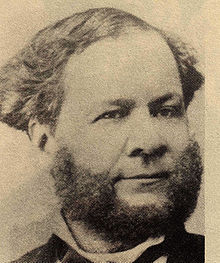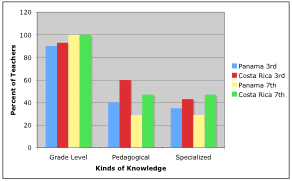How History, Philosophy, and Culture shape Education
When you think of a third world country, what characteristics come to mind? Underdeveloped? Uneducated?
Think again.

Building Estudios Generales inside Universidad de Costa Rica
Costa Rica, one of many third-world countries in South America, boasts a literacy rate of 96%, one of the highest of all Latin American countries. And the list of impressive characteristics doesn’t end there. In fact, Costa Rica is beginning to emerge as one of the most innovative country of educators.
Dedication to Innovative Education
Costa Rica’s educational philosophy reflects the nation’s historic dedication to orderly constitutional government, democratic principles, and human rights (source).
Many of Costa Rica’s early leaders, such as the first president, Jose Maria Castro, were former teachers who were concerned about the education in Costa Rica. In 1869, the country became one of the first in the world to make the education both free and obligatory, funded by the state’s share of the great coffee wealth. (Source). Furthermore, When the army was abolished in 1949, it was said that the army would be replaced by an army of teachers.
Costa Rica has continued throughout the twentieth century to make education a priority (source). During this time, topics such as technology, language, and environmental sustainability have been promoted.
Tourism Education

Students enjoy time practicing English in the computer lab
President Figueres, elected in 1994, advocated putting a computer in each of Costa Rica’s 4000 schools, plus obligatory English classes (source).These improvements were influenced by the recent rise of the tourist industry, which demands skilled workers who can effectively communicate (both verbally and electronically) with the swarm of English-speaking tourists. In return, these tourists contribute to a large percentage of Costa Rica’s national income, part of which is fed back into the educational system.
Along with the tourist boom comes another important topic of specialized education: the environment and sustainability. Costa Rica is building a reputation for itself as being proponents of environmental conservation. They are even building an economy centered on teaching tourists about the Costa Rican environment, and how to sustain it. Take for example the company Costa Rican Adventures, which I experienced during my honeymoon in Costa Rica. The employees not only acted as tour guides, but were also educated experts on their topic, such as the different animals of the rainforest, the types of plants and various uses of them, or the lifecycle of a volcano.
A Costa Rican tour guide teaches about the tree frog.
Arenal Volcano in La Fortuna, Costa Rica
Philosophical Beliefs and Curriculum Design
The Costa Rican education is based on three philosophical beliefs: rationalism, constructivism and humanism. According to UNESCO, a philosophical goal of the educational system as a whole is to facilitate “the formation of civic lovers of their Homeland, aware of their rights and of their fundamental freedoms, with deep sense of responsibility and respect to the human dignity.”
Based on these philosophies, the curriculum is designed like an “investigation process that understands the individual (integral formation), his/her context (integrated formation), and the relationship between both (integrative formation).”(UNESCO) The purpose of this curriculum is to cultivate more skilled students who can understand and utilize their personal learning style, to apply their knowledge to the enhancement of her/his quality of life, while at the same time understanding and respecting their peers. Throughout this process, the functioning of the educational institution and the community will also improve.
Four Pillars of Education
The Costa Rican education takes into account four pillars: to learn how to know, to learn how to make, to learn how to live together, to learn how to be; including in this process the student, collaborators, teachers and facilitators.
This conceptualization integrates the student, the teacher, the director, the family, the community, and the advisor. All of them define the direction of the curriculum that is developed in its interactions. “It passes from boys and girls who memorize to a boy and a girl that build knowledge when acting physical, mental, social, and emotionally with the environment (UNESCO).”
Watch this video for an example of a typical day in the Costa Rican classroom: Education in Costa Rica
Teaching Methodology
The educational system is administered in accordance with policy determined at the national level by the Higher Council of Education and executed by the Minister of Education (Gill 1980).
Relating back to the aforementioned pillar of “Learning to Do”, successful teachers use “concrete models to illustrate concepts and the more frequent use of hands-on activities such as cutting, coloring and pasting” (Sorto et. al) to enhance their lessons.
In a study by Sorta et. al, one specific aspect of teaching methodology observed was the general pedagogy skills, this includes how well the teacher has all of the students engaged, his/her use of proper classroom management techniques, and the quality of instructional materials. A quality teacher utilizes three areas of knowledge: grade level, pedagogical and specialized. “This specialized content knowledge is not necessarily separate knowledge, but it is demonstrated in the class by how well a teacher uses the mathematical and pedagogical knowledge to help students learn” (source).
Figure 1 shows the percentage of Costa Rican teachers that demonstrated knowledge in each of the kinds of knowledge described above.
Figure 1. Grade Three and Seven Teacher Observed Knowledge
Other sources:
Garcia, J.H. (2010, January 1). Assessment of Education for Sustainable Development in Universities in Costa Rica: Implications for Latin America and the Caribbean. ProQuest LLC.
Gill, C.C., & Department of Education, W.C.(1980). The Education System of Costa Rica. Education Around the World.
Munoz, N. (n.d.). UNESCO – Education for All – Knowledge sharing – Grassroots stories – Caribbean. United Nations Educational, Scientific and Cultural Organization. Retrieved February 27, 2013, from http://www.unesco.org/education/efa/kn
National Inform: The Development of Education Costa Rica. (n.d.).ibe.unesco. Retrieved February 25, 2012, from www.ibe.unesco.org/International/ICE47/





